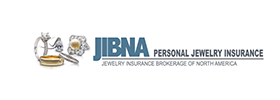There are some simple clues that indicate a tornado may be on its way.
First, notice the sky. A dark, greenish storm sky or a cloud that lowers itself down in the sky — a wall cloud — could indicate a tornado.
If you are in the middle of a storm, with hail and high winds that suddenly stop and all becomes quiet, this could mean a tornado is imminent. Hail forms above rotating winds so it is a serious sign of trouble.
Many people go outside in the quiet period to collect hail or marvel at the sudden stillness, but this could be a bad move. Instead, make everyone in the family put on long pants, sturdy shoes and discuss your tornado plan. According to livescience.com, about 50 percent of injuries from tornadoes come after the storm has passed when people are injured by debris, downed wire or leaking gas.
Dust devils swirling in fields or streets could mean rotating winds have already formed above in storm clouds. Make your plans to take cover.
If you hear a continuous roar, rumble or train-like sound, it means a tornado is near. Move immediately to an inside room or basement. Sometimes sheltering under a mattress will help.
If you are driving and you see a tornado, do not attempt to shelter under a bridge or overpass. There are no handholds on overpasses and the wind tends to be stronger. Those who survive, tend to have vicious injuries, losing limbs and fingers.
If you see a tornado while driving on a freeway, pull over to the side of the road, never stop on the road itself. This creates a dangerous situation for everyone on the road. Do not park your car under a bridge or overpass. Go to the nearest ditch, lie flat and cover your head. Do not shelter under your car.
The best idea is to find a building. But this may be impossible on a freeway.
If the road configuration allows it, drive at a 90 degree angle to the direction of the tornado. Don’t put yourself in the position of trying to outrun a tornado. You likely won’t win.
In the U.S., tornado season tends to move northward from late winter to mid-summer.







































